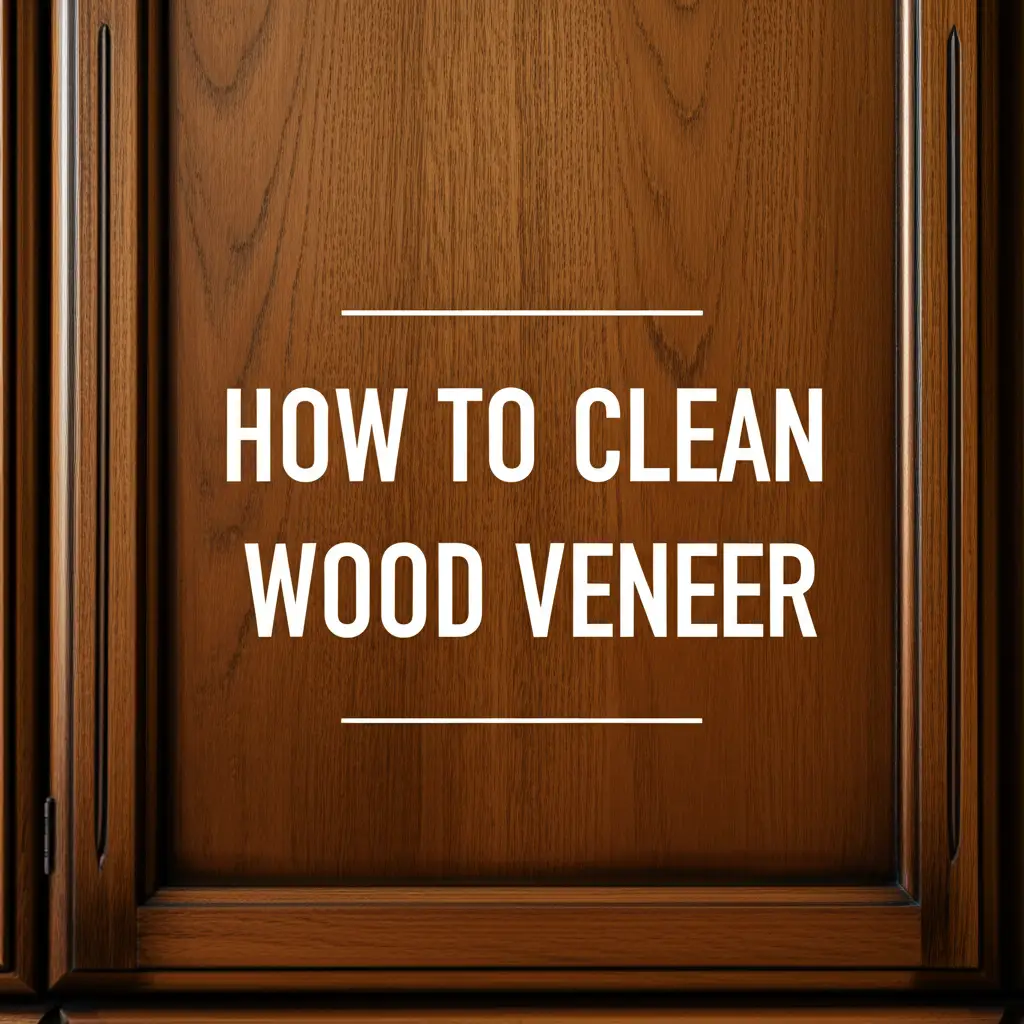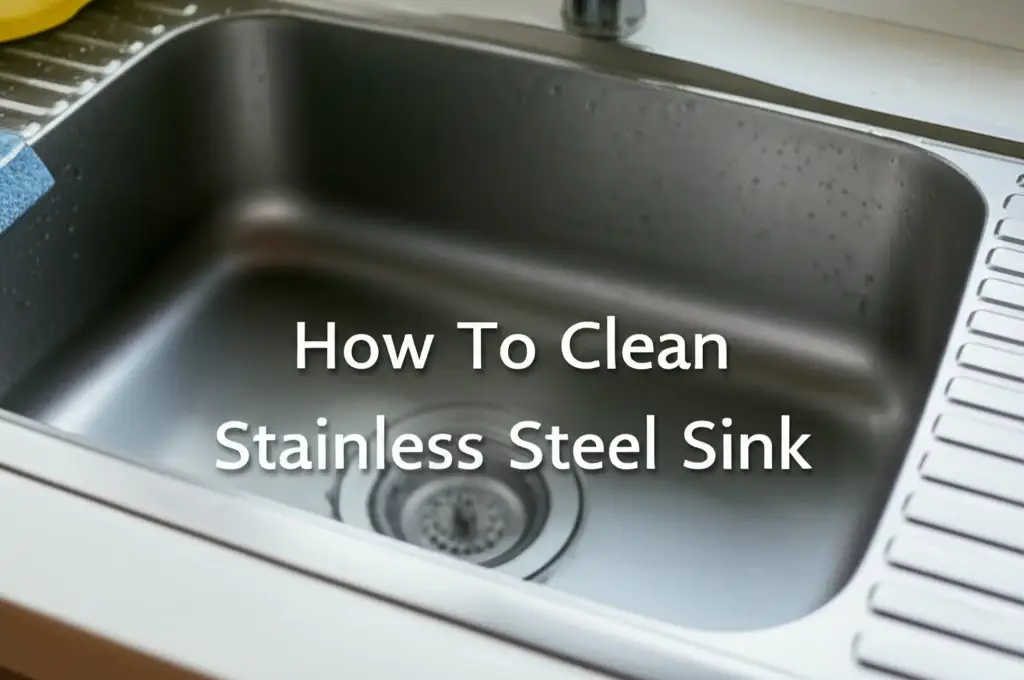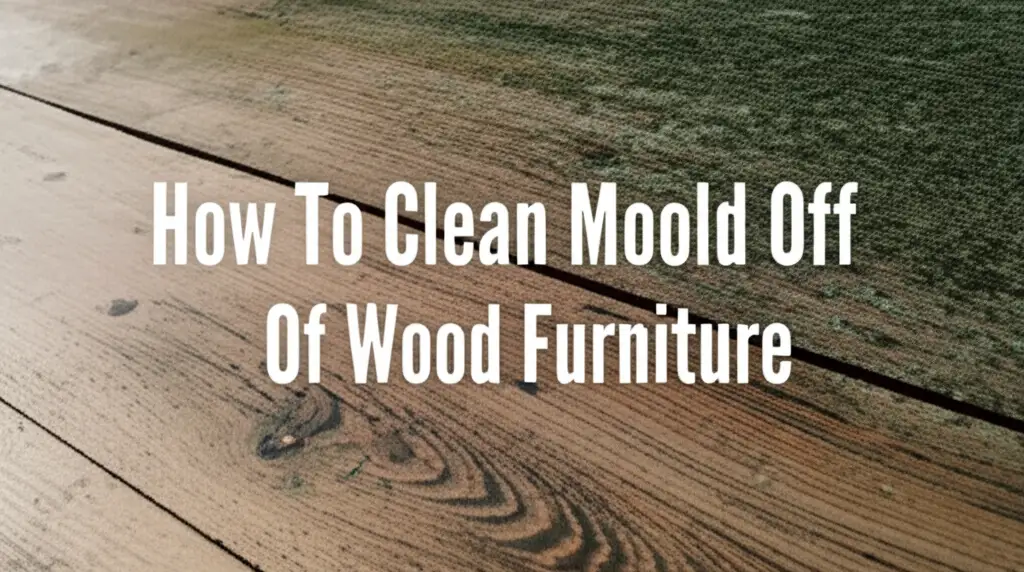· Home Cleaning · 13 min read
How To Clean Wood Veneer

Clean Wood Veneer: A Gentle Guide
Wood veneer offers beauty and elegance to any room. It is a thin layer of real wood. This layer bonds to a stronger base material. Veneer looks like solid wood but needs different care. Improper cleaning can damage veneer easily. This guide shows you how to clean wood veneer safely. You will learn about daily care and stain removal. I will also share tips for protecting your veneer items.
Takeaway:
- Always use soft, lint-free cloths.
- Use minimal water for cleaning veneer.
- Test any cleaning solution in a hidden spot first.
- Wipe spills immediately to prevent damage.
- Protect veneer from direct heat and sunlight.
To clean wood veneer, use a soft, damp cloth with a mild soap solution. Wipe gently in the direction of the wood grain. Immediately dry the surface with a clean, dry cloth. This prevents moisture damage and maintains the finish. Always avoid harsh chemicals or excessive water.
Understanding Wood Veneer: Its Nature and Vulnerability
Wood veneer is a thin slice of natural wood. Manufacturers bond this thin slice to a substrate. This substrate is often particleboard or MDF. Veneer provides the look of solid wood. It does this at a lower cost. However, its thinness makes it vulnerable. It needs special care.
What Makes Veneer Different?
Veneer is not solid wood. It is a surface layer. This layer can be very thin. It can chip or peel if treated roughly. The adhesive that holds it down can weaken with moisture. Harsh cleaners or too much water can cause damage. They can lift the veneer from its base. This changes the look of your furniture. It is important to treat veneer gently. You must use the right cleaning methods. This helps keep your veneer items beautiful.
Veneer is sensitive to scratches. Sharp objects can cut the thin wood. Heat and direct sunlight also pose risks. They can dry out the veneer. This may cause cracking. Moisture is a big enemy for veneer. Water can seep under the veneer. It can loosen the glue. This causes bubbles or peeling. Understanding these vulnerabilities helps you clean veneer correctly. It protects your furniture for years.
Essential Tools and Gentle Cleaners for Veneer
Cleaning wood veneer requires the right tools. You also need safe cleaning agents. Using harsh items can cause damage. You want to lift dirt without harming the delicate surface. Soft materials are always the best choice. They prevent scratches.
Safe Cleaning Solutions
You do not need strong chemicals. A simple solution works well. I recommend mild dish soap. Mix a few drops with warm water. You can also use a specialized wood cleaner. Choose one designed for finished wood surfaces. Avoid abrasive cleaners. Do not use ammonia-based products. These can strip the finish. They can also dry out the veneer. Some people use a vinegar solution. For tips on using vinegar, you can read about how to clean wood furniture with vinegar. Always dilute vinegar heavily. Test any cleaner in a hidden area first. This ensures it does not harm the finish.
Tools You Need
- Soft Microfiber Cloths: These cloths are essential. They pick up dust and dirt. They do not scratch surfaces. Have several clean cloths ready.
- Soft-Bristle Brush: A small, soft brush helps. It removes dust from carved areas. It reaches into tight spaces.
- Vacuum Cleaner with Brush Attachment: This is good for large veneer surfaces. It pulls dust and debris. Make sure the attachment is soft.
- Spray Bottle: Use this for your cleaning solution. It helps apply a fine mist. This prevents too much water.
- Bucket: A small bucket holds your cleaning solution.
- Gloves: Protect your hands from cleaning agents.
Gathering these items before you start helps. It makes the cleaning process smooth. You will have everything at hand. This reduces the chance of accidents. Remember, less is more when cleaning veneer. Use minimal moisture. Apply gentle pressure.
Daily Dusting and Light Cleaning of Wood Veneer
Routine care is key for wood veneer. Daily dusting prevents dirt buildup. It keeps your veneer looking fresh. Light cleaning addresses minor smudges. These simple steps protect the finish. They also extend the life of your furniture. Consistency makes a big difference.
Routine Care Steps
I recommend dusting your wood veneer regularly. Do this at least once a week. Use a dry, soft microfiber cloth. Wipe the surface gently. Always move in the direction of the wood grain. This helps pick up dust effectively. It also prevents streaks. For intricate areas, use a soft-bristle brush. This removes dust from carvings and crevices. A soft vacuum attachment can also help for larger pieces. Just be very gentle.
Quick Wipe Downs
Sometimes, dust is not enough. You might see fingerprints or light smudges. For these, a slightly damp cloth works well. Dampen a clean microfiber cloth with plain water. Wring it out thoroughly. The cloth should feel almost dry to the touch. Lightly wipe the smudged area. Follow immediately with a dry cloth. This ensures no water sits on the veneer. Water is the biggest enemy. It can cause swelling or peeling.
Never use sprays directly on veneer. Spray the cleaning solution onto your cloth instead. This controls the amount of moisture. Too much liquid can seep into seams. It can damage the adhesive beneath the veneer. Always work quickly and gently. This routine keeps your veneer clean. It prevents the need for harsher treatments later. Regular, light care is the best defense against damage.
Tackling Common Stains on Wood Veneer
Stains happen. When they appear on wood veneer, act fast. The delicate nature of veneer means stains can penetrate quickly. Different stains require different approaches. Always start with the gentlest method. Then, move to stronger options if needed.
Water Marks
Water rings are common. A glass left on the surface can cause them. For fresh water marks, dry the area immediately. For older, white rings, try this:
- Dab a clean, soft cloth with a small amount of petroleum jelly or mayonnaise.
- Rub it gently over the ring.
- Let it sit for a few hours, or even overnight.
- Wipe it clean with a dry cloth.
- If the ring persists, a very light application of a hair dryer on its lowest setting might help. Hold it far from the surface. Move it constantly. This can draw out the moisture. For more general advice on specific stains, see how to clean stains on wood.
Food Spills
Food spills need immediate action. Blot the spill with a clean, dry cloth. Do not wipe or spread it.
- Mix a few drops of mild dish soap with warm water.
- Dampen a microfiber cloth in the solution. Wring it out very well.
- Gently wipe the stained area.
- Immediately follow with a clean, dry cloth. For sticky or greasy food spills, a tiny bit of mineral spirits on a cloth might work. Test this in an inconspicuous spot first. Apply it sparingly. Wipe quickly. Always dry the area immediately after.
Sticky Residue
Sticky residue can come from tape or labels.
- Apply a small amount of mineral oil or olive oil to a soft cloth.
- Gently rub the sticky spot. The oil helps loosen the adhesive.
- Once the residue lifts, wipe the area clean.
- Then, clean the oily residue with a damp cloth (mild soap and water).
- Dry thoroughly with a clean, dry cloth. Do not use harsh solvents like nail polish remover or paint thinner. These will dissolve the veneer finish. They can cause permanent damage. Patience and gentle methods are key for stain removal on veneer.
Deep Cleaning and Restoring Shine to Wood Veneer
Sometimes, routine dusting is not enough. Veneer can accumulate grime over time. A deep clean can revive its look. After cleaning, you might want to restore its natural luster. This process requires care. You want to clean without saturating the wood.
Deep Cleaning Method
For a more thorough clean, prepare a gentle solution:
- Mix one teaspoon of mild dish soap into a gallon of warm water.
- Dampen a clean microfiber cloth in this solution.
- Wring the cloth out almost completely. It should feel barely damp.
- Wipe a small section of the veneer. Move in the direction of the wood grain.
- Immediately follow with a second clean, dry microfiber cloth. Buff the area dry.
- Work in small sections. Do not let any moisture sit on the surface. This method lifts stubborn dirt. It cleans the veneer without saturating it. This keeps the adhesive intact. You can use similar principles when you clean wood surfaces around your home.
Restoring Luster
After cleaning, your veneer might look dull. You can restore its shine.
- Polishing: Use a wood polish designed for finished wood. Choose a product that does not contain silicone. Silicone can build up over time. It can also cause a hazy look. Apply a small amount to a clean, soft cloth. Rub it gently into the veneer. Buff it to a shine with a separate clean cloth.
- Waxing: For added protection and shine, consider a paste wax. Apply a thin, even coat of natural beeswax or carnauba wax. Use a soft cloth. Let it dry according to product instructions. Then, buff it vigorously with a clean, soft cloth. Wax offers a durable layer. It protects against moisture and minor scratches. It also enhances the wood’s natural beauty.
Always apply polishes or waxes sparingly. Too much product can create a sticky film. This film attracts dust. Test any new product in a hidden spot first. This ensures it does not affect the veneer’s finish. Proper deep cleaning and polishing keep your veneer looking its best.
Protecting Your Wood Veneer for Long-Term Beauty
Cleaning is important. However, protecting your wood veneer prevents future damage. Proactive steps save effort later. They ensure your veneer items last for many years. Think about daily habits. Consider environmental factors. Small changes make a big difference.
Preventative Measures
- Use Coasters and Mats: Place coasters under drinks. Use placemats under hot dishes. Heat and moisture are enemies of veneer. They cause rings, bubbles, or warping.
- Avoid Direct Sunlight: Prolonged exposure to sunlight fades wood veneer. It can also dry it out. Position furniture away from direct windows. Use curtains or blinds. This blocks harsh UV rays.
- Lift, Do Not Drag: When moving items on veneer, lift them. Do not drag. Dragging causes scratches. Veneer is thin. Scratches are often permanent. This applies to decor items or plates.
- Wipe Spills Immediately: Spills are the biggest threat. Blot any liquid spill right away. Use a soft, dry cloth. Do not rub. Rubbing spreads the liquid. It pushes it into the veneer. Quick action prevents water damage and stains. This is true for all your finished wood surfaces, including wood cabinets that might be veneer.
Environmental Control
- Maintain Stable Humidity: Wood veneer is sensitive to humidity changes. Too dry, and it can crack. Too humid, and it can swell. Use a humidifier in dry climates. Use a dehumidifier in humid ones. Keep the humidity level between 40-50%. This is ideal for wood.
- Control Temperature: Extreme temperature swings also affect veneer. Keep your home temperature stable. Avoid placing veneer furniture near heat vents or fireplaces. These can dry out the wood. They can also weaken the adhesive.
By following these protective measures, you reduce the need for aggressive cleaning. You maintain the integrity of the veneer. This keeps your furniture looking beautiful and strong. Protecting veneer is about smart daily habits. It extends the life of your prized pieces.
Mistakes to Avoid When Cleaning Wood Veneer
Cleaning wood veneer requires care. Many common cleaning habits harm veneer. Knowing what to avoid is as important as knowing what to do. Avoiding these mistakes prevents damage. It protects your investment.
What Not to Use
- Harsh Chemicals: Never use abrasive cleaners. Avoid strong solvents. Do not use ammonia-based products. Glass cleaner, all-purpose cleaners, or bleach are too aggressive. They strip the finish. They can also discolor the veneer. Use only mild soap and water, or a specialized veneer cleaner.
- Excessive Water: Water is the biggest enemy of veneer. Do not soak the surface. Do not use dripping wet cloths. Water can seep into seams. It can loosen the adhesive. This leads to bubbling, peeling, or warping. Always wring out cloths very well. Dry the veneer immediately.
- Abrasive Materials: Steel wool, scouring pads, or rough cloths scratch veneer. The thin wood layer shows scratches easily. These marks are hard to remove. Always use soft microfiber cloths.
- Silicone-Based Polishes: Some furniture polishes contain silicone. Silicone creates a temporary shine. Over time, it builds up. This leaves a hazy film. It also makes future repairs difficult. Choose silicone-free products. Natural waxes are a good alternative.
Common Pitfalls
- Leaving Spills: Do not let spills sit. Even clear water can cause damage if left. Blot spills immediately.
- Direct Spraying: Do not spray cleaning solutions directly onto the veneer. This applies too much liquid. It risks saturation. Spray your cloth first.
- Rubbing Too Hard: Gentle wiping is key. Rubbing too hard can damage the finish. It can even scuff the veneer itself.
- Ignoring a Test Spot: Always test new cleaners or polishes. Apply a small amount to an inconspicuous area. This might be the underside or back of a piece. Wait to see if it causes any discoloration or damage.
By understanding these mistakes, you can clean your veneer safely. You prevent costly repairs. Proper care keeps your wood veneer furniture looking its best for years. This attention to detail preserves its beauty.
FAQ Section
Q1: Can I use furniture polish on wood veneer? A1: Yes, you can use furniture polish. Choose a polish specifically for finished wood surfaces. Avoid products with silicone, as these can build up and cause a haze over time. Apply polish sparingly with a soft cloth. Buff it dry immediately. This helps maintain the veneer’s natural luster.
Q2: How often should I clean my wood veneer furniture? A2: Dust your wood veneer furniture at least once a week with a soft, dry microfiber cloth. For light smudges or fingerprints, a slightly damp cloth can be used as needed. A deeper clean with mild soap and water should only be done occasionally, perhaps once every few months or when visible grime builds up.
Q3: What should I do if my wood veneer is peeling? A3: Peeling veneer usually means the adhesive has failed. Cleaning it may cause further damage. Do not try to clean peeling veneer vigorously. Seek professional furniture repair. A restorer can re-glue the veneer properly. This prevents more significant damage to the piece.
Q4: Is vinegar safe to use on wood veneer? A4: Vinegar can be used, but with extreme caution and high dilution. Mix a small amount of white vinegar with a large amount of water (e.g., 1 part vinegar to 10 parts water). Too much vinegar can strip the finish or dry out the wood. Always test it in an hidden area first. Dry the surface immediately after.
Q5: Can I use oil-based cleaners or polishes on veneer? A5: Some oil-based cleaners or polishes are fine if they are specifically for finished wood. However, use them sparingly. Too much oil can leave a sticky residue that attracts dust. It can also make the surface appear dull over time. Natural oils like mineral oil can help with sticky residues, but always clean off the excess.
Conclusion
Cleaning wood veneer requires a gentle touch. It is not like cleaning solid wood. Its thin layer and adhesive bond make it vulnerable. You now understand how to clean wood veneer safely. Regular dusting and prompt spill cleanup are your best defenses. Use mild soap and water for deeper cleaning. Always apply minimal moisture. Immediately dry the surface.
Protect your veneer from direct sun and extreme temperatures. Use coasters and placemats. Avoiding harsh chemicals and abrasive materials is critical. By following these simple, direct steps, you preserve the beauty of your veneer. This keeps your furniture looking elegant for years. Your efforts will ensure these pieces remain treasured parts of your home.
- wood veneer
- furniture care
- cleaning tips
- delicate surfaces
- home maintenance




